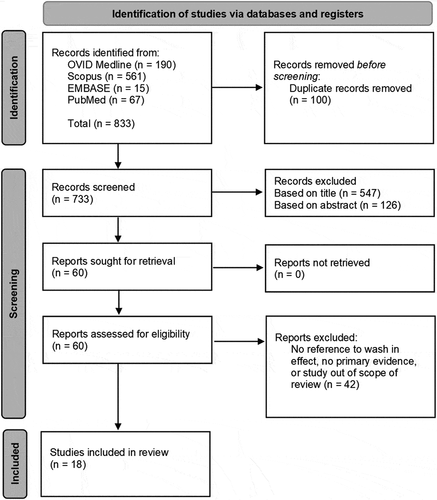Figures & data
Table 1. Combined results of the literature searches
Table 2. Each identified study listed by the proposed wash-in effect mechanism
Figure 1. The PRISMA flow diagram showing the stages of screening and exclusion. From 733 unique papers, 60 full studies were assessed with 18 being included in the review.

Figure 2. A model skin diagram outlining four of the proposed mechanisms for the wash-in effect (physicochemical effect and in vitro artifact not shown as no harmonized single mechanism). 1) The effect of hydration on skin with (A) showing the swelling corneocytes causing cavitation between cells which leads to (B) pooling of water within the SC. SC hydration is also intrinsically linked with thermodynamic effects including altered diffusion of chemicals within the SC. 2) Surfactant micelles penetrate through the lipid bilayer, eventually leading to delipidation and membrane fluidization. 3) Physical effects including friction can remove external layers of the SC, compromising the barrier function and increasing penetration. Blood flow can further increase systemic absorption through rubefacient action, increasing clearance of compound within the skin. 4) Acids or bases can alter the acid mantle on the skin, compromising the skins barrier.

Data availability statement
Data sharing is not applicable to this article as no new data were created or analyzed in this study.
